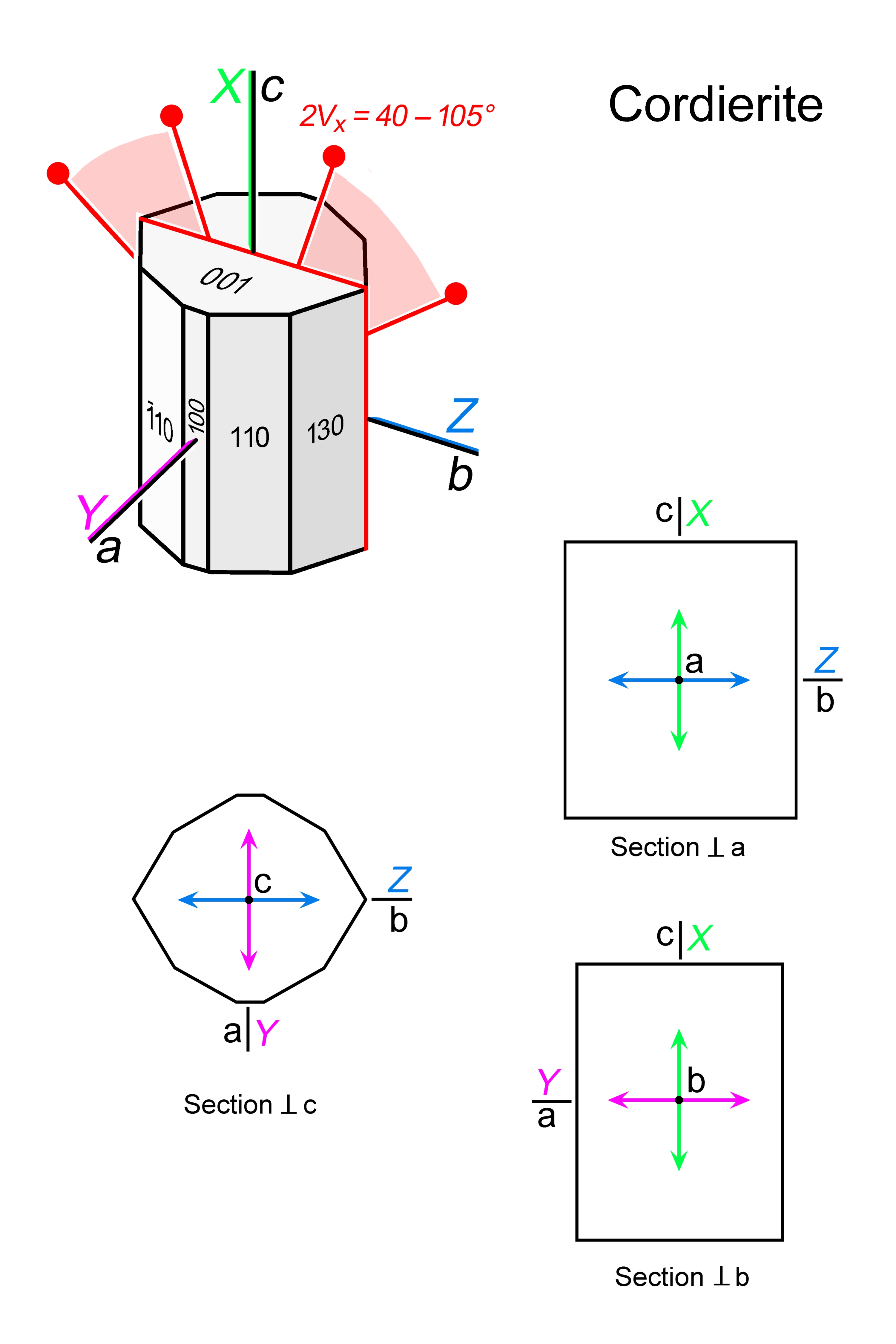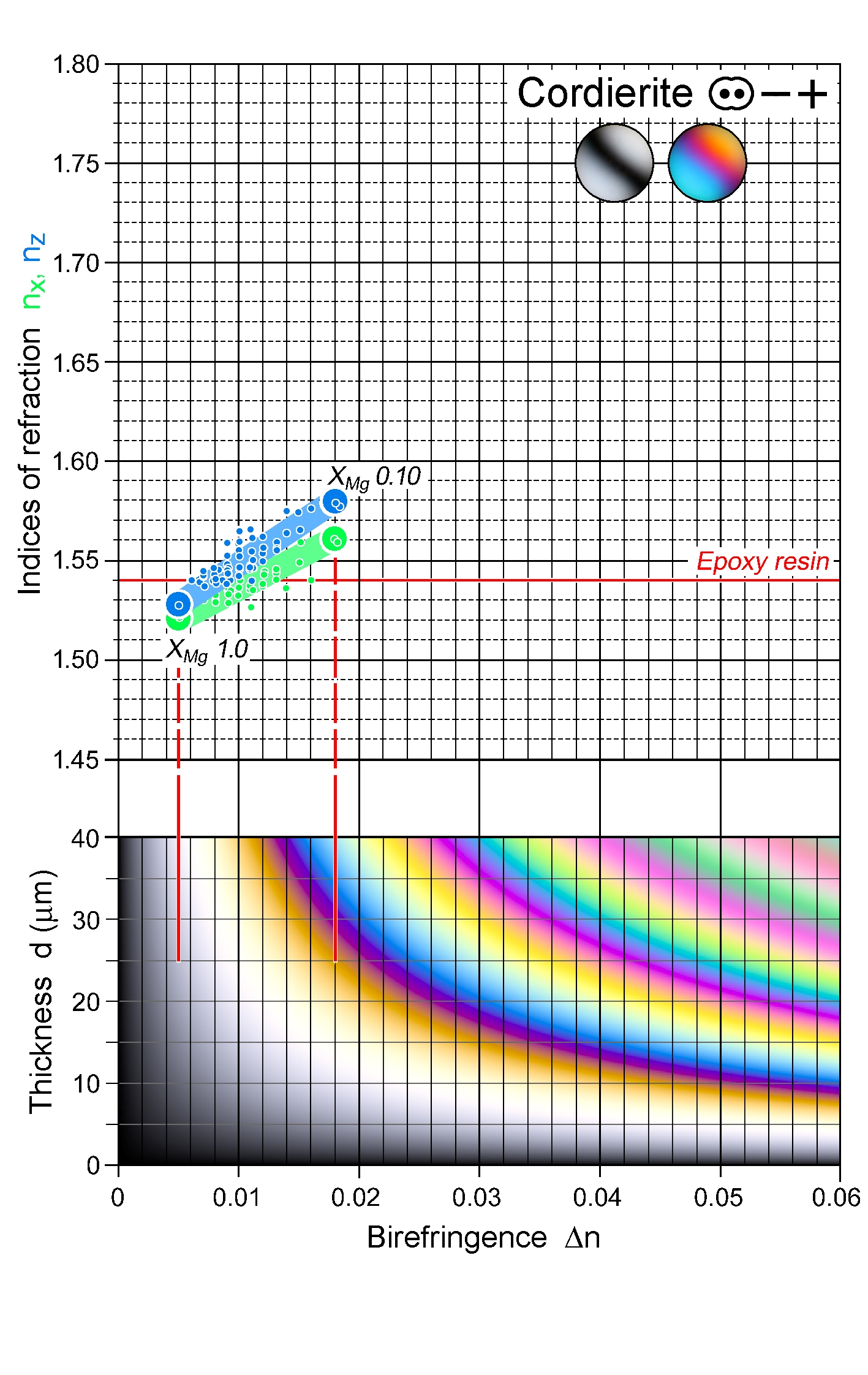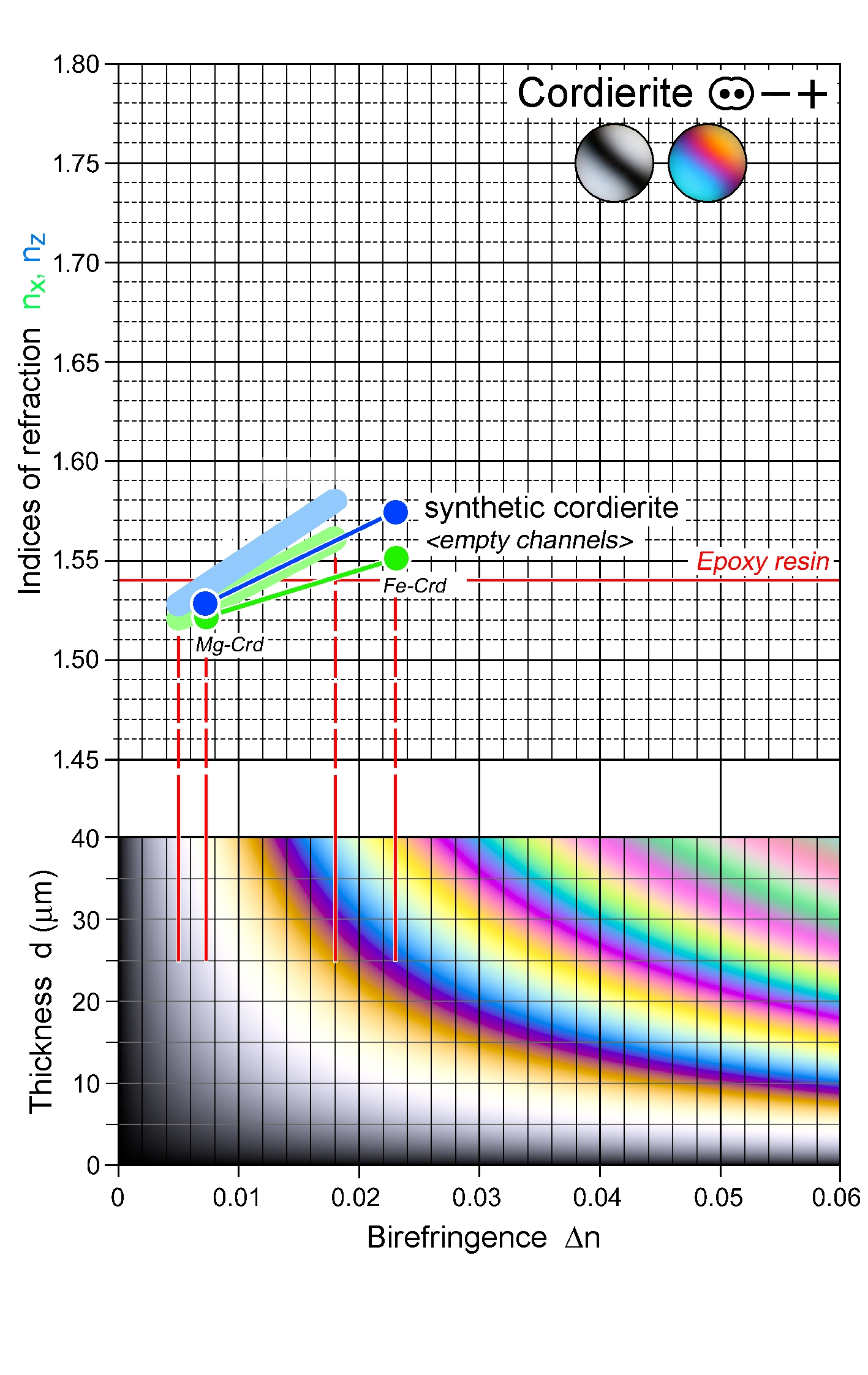|
| Formula | (Mg,Fe)2(Si5Al4)O18 ∙ n(H2O,CO2) |
| | Optic class & sign | Biaxial positive or negative |
| | Optical orientation | a = Y, b = Z, c = X |
| | Optical plane | (100) |
| | Relief | Low negative to low positive |
| | Refractive indices | nx = 1.522 -1.560
|
|
ny = 1.524 -1.574
|
|
nz = 1.527 -1.578
|
|
| n increases with increasing Fe and Mn and increasing channel occupancy (H2O and CO2); n increases with increasing disorder (indialite has maximum n) |
| | Birefringence (max.) | 0.005 - 0.018 |
| | | Δn increases with increasing Fe and Mn and increasing channel occupancy (H2O and CO2) |
| | Optic Angle
| 2Vx
= 35 - 90° |
| | 2Vz
= 90 - 74° |
| | Sign of elongation | Length-fast, l (-) for sections elongate in c; direction of elongation is normally not obvious, though. |
| | Interference figure | Most cordierites are optically negative with 2V between 65 and 85°; broad, dark isogyres on a low-birefringence field |
| | Colour / pleochroism | Colourless; Fe-rich varieties may show pale colour and pleochroism, with Z > Y > X with X = colourless, pale yellow, pale green, Y = pale blue to violet, Z = pale blue |
| | Zoning | |
|
|
| Form | Habit | Ovoid-shaped crystals in medium-grade schists; irregular shapes in high-grade rocks |
| | | Surface | Commonly anhedral; rarely euhedral prismatic |
| | Cleavage | Single set {010}; parting on {001} may be observed |
| | Twinning | Cyclic or sector twins on {110}, arranged as six sectors showing three pairs of sectors ("cross-triplet") with different crystallographic orientation, respectively; twin contacts can be very irregular; lamellar twins on {110}, also on {310}; lamellar twins are particularly common in high-grade rocks. Complex twins of sets of lamellae intersecting at about 60°. |
| | Extinction | Straight to prism faces and cleavage in sections parallel c. |
|
|
| Reaction textures | Multiple reactions involving cordierite, prograde as well as retrograde, lead to a variety of reaction textures involving, for example, aluminosilicates, garnet, chlorite |
| | Alteration / decomposition | Common as cordierite is prone to breakdown in the presence of water; "pinite" is the typical material of low-temperature cordierite replacement: a yellow to greenish-yellow aggregate of chlorite and other phyllosilicates, preferentially developed along grain boundaries and fractures; complete pinitisation is not uncommon |
|
|
| Occurence | Ign | Aluminous granites, pegmatites, also gabbros, rarely in andesitic to dacitic volcanic rocks |
| | | Met | Regional- and contact-metamorphic pelitic rocks at amphibolite- to granulite-facies conditions, restricted to low-pressure, high-temperature facies series ("Buchan" or "Abukuma" series), including contact hornfelses and migmatites; with ortho-amphibole in Al-poor, Mg-rich rocks of either propylitic alteraton zone or sedimentary origin |
| | | Sed | |
| | | Hyd | Quartz veins |
| | | Other | |
|
|
| Distinctive properties | Low relief, low birefringence, characteristic twinning if present, and characteristic alteration; pseudo-hexagonal shape if euhedral. Unaltered cordierite may be difficult to distinguish from quartz or feldspar.As opposed to plagioclase twinning, cordierite twin lamellae intersect at different angles and tend to be less regular, tapered in appearance.
Cordierite in medium-grade metapelitic rocks tends to form inclusion-rich porphyroblasts, whereas granulite-facies cordierites are commonly inclusion-poor. Distinct yellow pleochroic haloes around zircon and monazite inclusions. |
| | Additional comments | Indialite: high-temperature polymorph, completely Si-Al-disordered and hence hexagonal |
|
|

 Images
Images 



 Images
Images 

